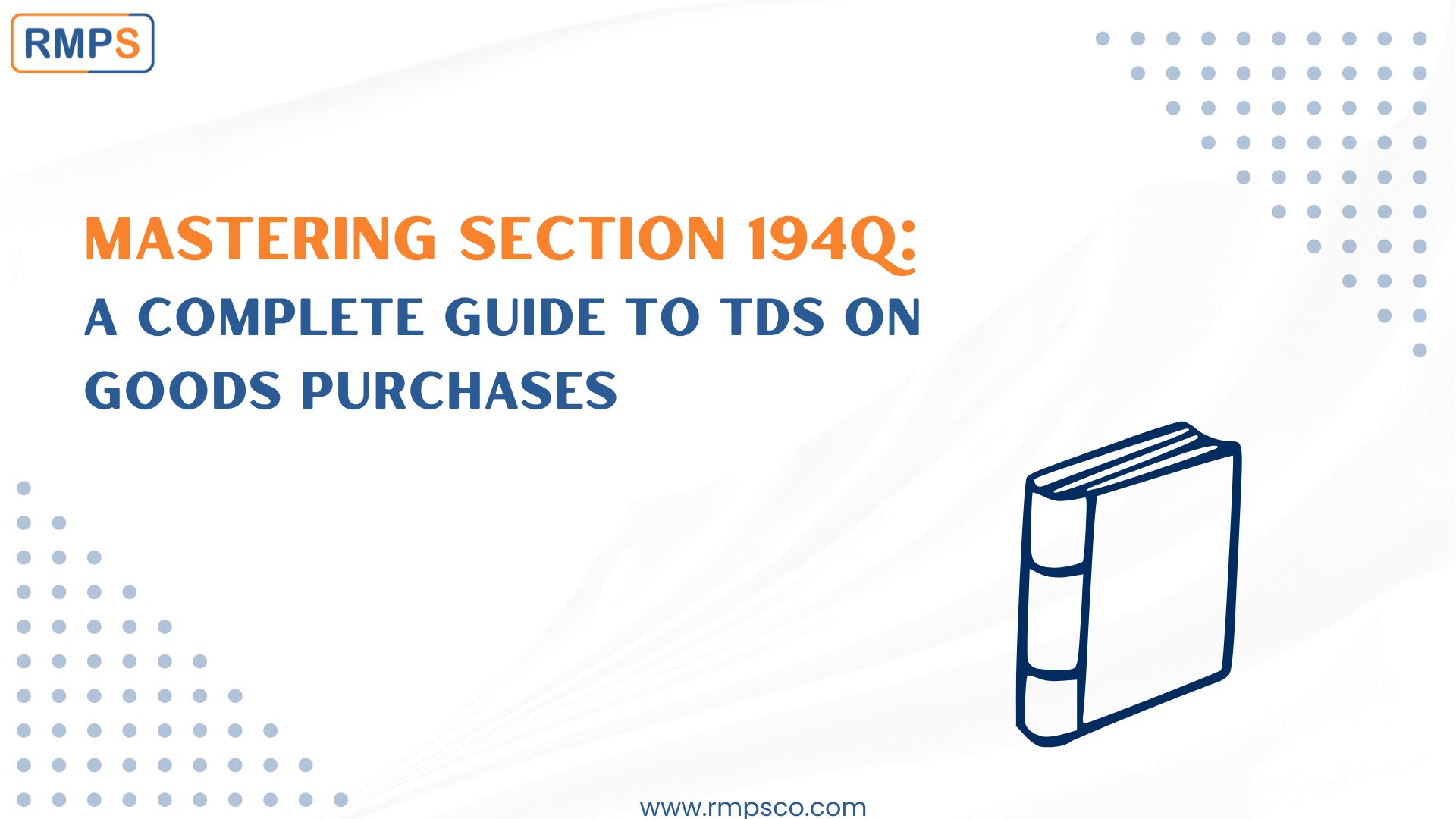
Introduction
Section 194Q of the Income Tax Act was introduced to improve tax compliance on business transactions involving the purchase of goods. It requires buyers to deduct tax at source (TDS) when certain conditions are met. Understanding this section is crucial for businesses, as it can significantly impact tax obligations and financial transactions. In this blog, we’ll explain the key details of Section 194Q, including its applicability, compliance steps, and the consequences of ignoring it.
What is Section 194Q?
Section 194Q came into effect on July 1, 2021, to ensure better tax collection. It requires buyers to deduct tax when they purchase goods worth over ₹50 lakh in a financial year. However, Section 194Q only applies to purchases from Indian residents, excluding imports or transactions with non-resident sellers.
Key Provisions of Section 194Q
Threshold for Applicability
This section applies when a buyer purchases goods worth more than ₹50 lakh from a single seller in a financial year. Multiple smaller transactions can accumulate and cross this limit, triggering the need for TDS.
TDS Rate
Buyers must deduct TDS at the rate of 0.1% on the total purchase value once they exceed the threshold. However, if the seller fails to provide a PAN (Permanent Account Number), the rate increases to 5%.
Who Must Deduct TDS?
Only buyers with an annual turnover or receipts exceeding ₹10 crore in the previous financial year are required to deduct TDS. This rule applies to large businesses only.
Timing of Deduction
Buyers should deduct TDS when they credit the seller’s account or when they make the payment—whichever happens first.
Consequences of Non-Compliance
If a buyer fails to deduct TDS under Section 194Q, they may face several penalties:
- Interest and Penalty: If the buyer fails to deposit or deduct TDS, they must pay interest at 1% per month from the due date to the day when TDS is deducted. If the TDS is deducted but not deposited on time, interest is 1.5% per month until deposited.
- Disallowance of Expenses: Under Section 40a(ia), 30% of the purchase cost may be disallowed as an expense when calculating taxable income.
- Increased Scrutiny: Non-compliance can invite more scrutiny from tax authorities, complicating future tax assessments.
Impact on Businesses
Section 194Q introduces extra compliance measures for businesses, especially those involved in large transactions. Companies must carefully track their purchases to avoid missing the TDS deduction after crossing the ₹50 lakh threshold. Additionally, businesses must ensure they have the seller’s PAN details to avoid a higher TDS rate. This extra layer of compliance could increase the administrative burden, but staying compliant will prevent unnecessary financial risk.
Section 194Q vs. Section 206C(1H)
Many businesses confuse Section 194Q with Section 206C(1H), which deals with tax collection at source (TCS) on sales of goods. The key difference is that Section 194Q makes the buyer responsible for deducting TDS, while Section 206C(1H) requires the seller to collect TCS. However, Section 194Q prevails in cases where both could apply.
Steps for Compliance
- Monitor Purchases: Keep detailed records of purchases to track when you exceed the ₹50 lakh threshold.
- Collect PAN Information: Ensure your suppliers provide their PAN to avoid paying the higher TDS rate of 5%.
- Record Transactions Accurately: Set up an organized system for tracking TDS deductions and payments to ensure timely compliance.
- Stay Updated: Regularly check for updates in tax regulations to avoid missing changes in TDS rules.
Conclusion
Section 194Q of the Income Tax Act, 1961, was introduced to ensure tax collection at the source on large transactions. It mandates that buyers, whose total sales or turnover exceeds ₹10 crore in the previous financial year, must deduct 0.1% TDS on purchases exceeding ₹50 lakh from a resident seller in a financial year. This provision is designed to improve compliance and transparency and prevent tax evasion in high-value transactions. It applies primarily to businesses and aims to expand the tax net while simplifying tax collection on significant purchases.
LinkedIn Link : RMPS Profile
This article is only a knowledge-sharing initiative and is based on the Relevant Provisions as applicable and as per the information existing at the time of the preparation. In no event, RMPS & Co. or the Author or any other persons be liable for any direct and indirect result from this Article or any inadvertent omission of the provisions, update, etc if any.
Published on: September 9, 2024
